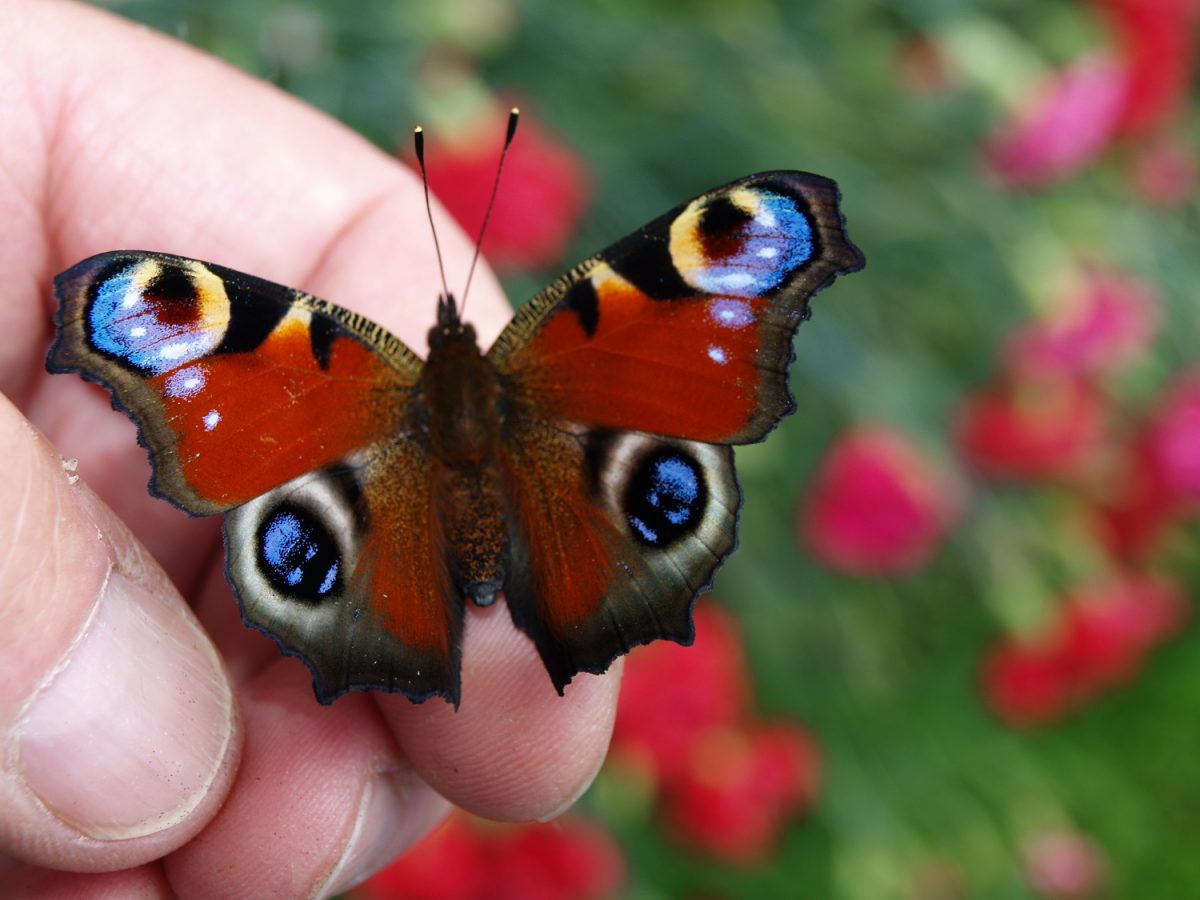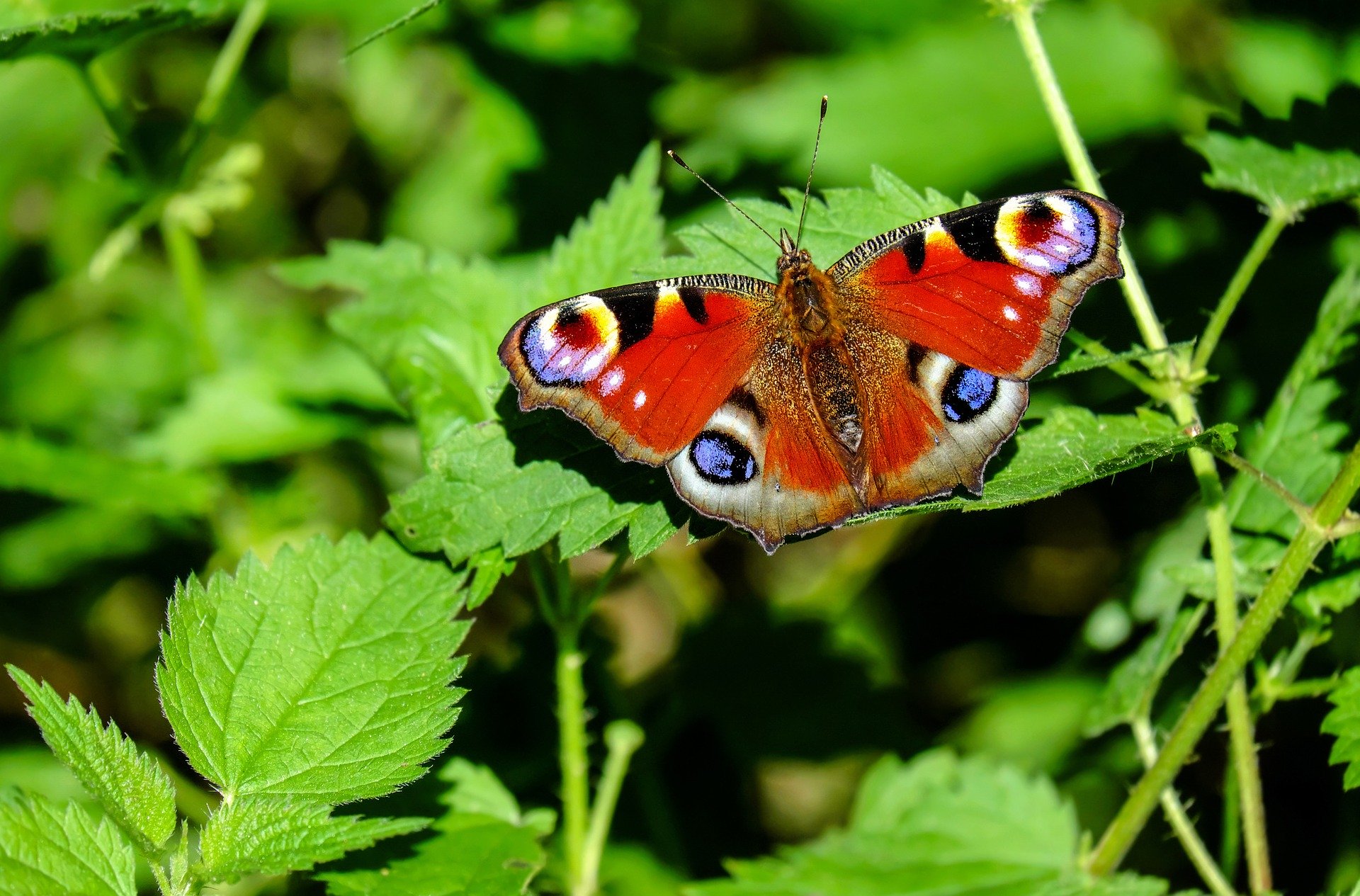(nur auf Englisch)
Living communities function as systems: for example the peacock butterfly dependent on its host plant, the stinging nettle.

The Peacock Butterfly Inachis io
The idea that living communities function like systems come from the American Stephen Alfred Forbes (1884-1930).
Here is a great example with the celebration of a familiar butterfly that hibernates in our department, the peacock butterfly, dependent on its host plant, the stinging nettle, the unloved one.
Every animal, and the butterfly is one of them, realizes its part of nature and beauty » (Aristotle, Greek philosopher).
The peacock butterfly is remarkable for several reasons:
- it is one of the first butterflies toshow up in spring;
- it is five centimeters long;
- its wings are decoratedwith large eye-spots, like those in peacock feathers,hence its name.
As soon as autumn starts, it hides near houses in very dark and isolated places so it can stay in a lethargic state without being disturbed.
On sunny days, the female mates, lays soft green eggs and glues them under a nettle leaf.
They stay there for twenty days, protected from the bad weather and birds.
When the eggs hatch, tiny non-stinging caterpillars gather in silk nets to feed together, for 30 days, only of nettle leaves right on the plant, sheltered from any danger.
Once the leaves are all eaten, from the plant only remains the stem with long silken threads, the caterpillars’ moults, sign of the transition of the species.
After several moults, the caterpillars become black, they are separated and hang on to the nettle upside down, thanks to a silk pad (the cremaster) so they can swing under the frivolous wind without falling.
Within a few days, they are transformed into greenish chrysalises with metal hints, typical of the species.
This nymphal stage lasts for fifteen days during which the butterfly takes his form and comes to life, head first, with its wings folded and wet, after having pierced the necessary envelop for its metamorphosis.
One day after being born, with its wings open and dry, the butterfly can fly in good weather and look for its first food, called nectar, on fragrant flowers that it can notice with its antennae’s olfactory receptors.
With its trunk, it sucks up this nectar food, unique for him and which will always be for the rest of its life.
This is why we must protect wildlife:
- planting species withflowers that give nectars, a drink mostly composed of water, fructose, glucose,vitamins, amino acids and bactericidal substances necessary to these insectslife;
- letting nettles grow to feed thecaterpillars of these fragile endangered butterflies;
- avoiding the use of chemical substanceson plants and flowers, because they sacrifice the butterflies when they land onthem.
With the authorization of « l’Est Eclair / Libération Champagne »
Head and featured photo © Couleur
